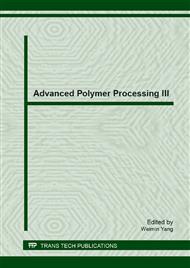p.186
p.192
p.196
p.201
p.206
p.212
p.218
p.223
p.228
Numerical Study of Boiler Feed Water Deoxygenation Using Hollow Fiber Membrane Contactor
Abstract:
Removal of dissolved oxygen from feed water is a necessary process in power industry. The hollow fiber membrane contactor is more efficient and pollution-free compared with some traditional methods. In this paper, hollow fiber is modeled by random distribution, and Gaussian function N(R, sigma) was used to model the polydisperse out radii of hollow fiber. This paper discussed the influence of different sigma on mass transfer coefficient with fiber packing density ranging from 0.1 to 0.4. It was found that, the effect of different sigma on the logarithmic mean Sherwood number decreased with increasing fiber packing density. When the packing density increased to 0.4, the removal of dissolved oxygen could meet the requirement of power industry, no matter how much value the sigma was. With the sigma increasing, the deviation of max and min Sherwood number from the average value increased gradually, except when the sigma was 0.05. This paper deduces there is a best value of sigma for membrane contactor when the fiber distribution is randomly distributed.
Info:
Periodical:
Pages:
206-211
Citation:
Online since:
July 2013
Authors:
Price:
Сopyright:
© 2013 Trans Tech Publications Ltd. All Rights Reserved
Share:
Citation:


